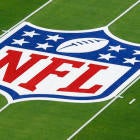More college football: Dennis Dodd | Jeremy Fowler | Jon Solomon | Latest news
How did the proposed NCAA concussion settlement come up with the $70 million figure for a medical monitoring fund? The plaintiffs in the concussion lawsuit showed their math in an expert report that provides a rare look into estimated projections of long-term brain damage in contact sports.
Unlike the proposed $765 million NFL settlement, the NCAA’s preliminary agreement details how the $70 million number was reached. The NCAA settlement would only cover diagnostic medical expenses, not actual treatment -- a criticism by some opponents of the deal -- while preserving athletes’ rights to individually sue universities, conferences or the NCAA for personal-injury damages.
Among the estimations made by medical experts and economists in creating the model for the NCAA settlement:
•College football players are three times more likely than the general population to have symptoms related to chronic traumatic encephalopathy (CTE), a debilitating disease associated with repetitive head trauma. That’s roughly the same risk level seen in former NFL players. The risk of having CTE symptoms in NCAA contact sports other than football -- lacrosse, wrestling, ice hockey, field hockey, soccer and basketball -- is one-and-a-half times higher than the general population.
• Approximately 50 to 300 former college athletes per year will be diagnosed with CTE for a period covering college careers between 1956 and 2008.
• Approximately 10 to 50 former athletes per year will be diagnosed with post-concussion syndrome (PCS) for a period covering college careers between 1956 and 2008.
• Between 10 percent and 25 percent of athletes may apply for medical monitoring over the 50-year life of the settlement. The class consists of about 4.2 million current and former male and female college athletes, with 717,000 from football, 1.1 million from other contact sports, and 2.4 million from non-contact sports. Current and former NFL players are part of the estimates and eligible to be tested through the NCAA settlement.
• The cost of testing each qualified athlete will fit into these estimated ranges depending on the nature of an individual case: $1,431 to $1,645 for a PCS test; $2,198 to $2,528 for a CTE test; and $2,477 to $2,725 for MRI imaging.
The expert report was produced by Analysis Group, a consulting group for law firms, corporations and government agencies, and was filed this week with the proposed NCAA settlement. Committee members who worked on the report were:
• Economist Bruce Deal, Analysis Group managing partner
• Concussion expert Dr. Robert Cantu, co-founder of the CTE Center at Boston University, and whose expert report was relied upon heavily in the Adrian Arrington lawsuit that resulted in this settlement
• Health care expert Dr. Matthew Barrett, Analysis Group vice president
• Statistical expert Dr. Lynn Huynh, epidemiologist and health economist with Analysis Group
• Health care and health insurance expert Kimberly Shores, an actuary and vice president with Lewis & Ellis, Inc. Actuaries and Consultants.
NCAA chief medical officer Brian Hainline, a neurologist who would be on the five-person committee overseeing the medical monitoring fund, was not listed on the expert report. The proposed settlement that would release athletes' class-action claims states that any information generated through the medical monitoring program “does not and shall not constitute an admission by the NCAA or any other Released Person.”
The $70 million fund "is very likely to be adequate for its purpose of sustaining a medical monitoring program for 50 years for former NCAA student-athletes with either PCS or CTE," the report concludes.
Will $70 million be enough?
As is the case with any settlement, the $70 million number for medical monitoring -- the NCAA will provide another $5 million for research -- isn’t a precise number. Once attorneys receive up to $15.75 million in fees and out-of-pocket expenses, the fund could be closer to $54 million.
Attorneys' fees and expenses could account for 23 percent of the settlement fund. By contrast, attorneys in the NCAA/Electronic Arts video-game settlements could be awarded up to 37 percent of the combined agreements.
In the concussion settlement, the administrative costs alone are estimated to total $6.7 million, factoring in legal and professional fees, and costs for the class notice, gathering, processing and screening questionnaires, referring eligible players to test providers, and processing provider payments. The expert report estimates a 3.4-percent annual return on fund investments and factors in a 3.7-percent inflation rate.
The model used by the committee to determine if there’s enough money for 50 years was based on various factors, such as U.S. mortality rates, NCAA concussion and participation rates, past studies and literature by doctors and concussions experts, and professional judgment.
For a college athlete to get tested for PCS or CTE through the fund, he or she must first complete a screening questionnaire. The model “conservatively” assumes 90 percent of the questionnaires completed will be from people who do not have PCS and/or CTE, according to the report. The model treats CTE and PCS as separate diseases because, although there may be substantial overlap between the two, the relationship isn't understood well enough yet, the report states.
Post-concussion syndrome is defined in the report as "the rapid onset of cognitive impairment resulting from mechanical trauma to the head." The report cites studies showing about 80 percent of concussions are resolved in seven to 10 days, while around 1 percent result in symptoms that are not resolved within one year of injury.
The committee members who created the model said they consider 1 percent a “reasonable figure.” But instead, they conservatively estimate 5 percent of concussions don’t resolve themselves within the first year, declining to 1 percent within five years of head trauma.
Evidence suggests that unreported concussions may comprise up to 50 percent of all concussions, according to the NCAA settlement expert report. The committee concluded that since unreported concussions are likely to be mild, it’s assuming 25 percent of concussions resulting in PCS are unreported or not diagnosed.
Because of how PCS impacts people suffering from it, the committee said it thinks most class members and their families will be able to easily tell -- when given appropriate educational materials -- whether they have symptoms needed for testing.
"The Screening Questionnaire should be able to filter out most respondents not appropriate for testing, though our modeling will not be perfectly accurate,” the report states. "To be specific, our modeling recognizes that a substantial fraction (up to 25 percent) of test subjects may not have the underlying diseases."
The report describes testing for CTE as more difficult. Currently, the only way to confirm a CTE diagnosis is through an autopsy. There are tests now that show if a living person has signs of CTE, which is linked to dementia and depression. Some former NFL players have taken these tests.
The NCAA settlement model uses growing research involving former NFL players to develop estimates the committee members describe as conservative.
“Since former-NFL players have been subject to powerful impacts over a longer period than former NCAA student-athletes, the prevalence of CTE in the former population is an upper bound for its prevalence in the latter,” the NCAA settlement model report states.
For CTE testing, the model focuses on people with comparable symptoms between the ages of 35 and 65, although older people can also apply for testing from the settlement. The range from 35 to 65 years old is cited as the period when CTE symptoms begin, such as cognitive symptoms that resemble dementia. More than half of the CTE tests are expected to occur after the 10th year of the 50-year fund, by which point CTE tests could be more effective and cost less, according to the report.
The model assumes the funding from the NCAA and/or its insurers will be $30 million in the first year, $20 million in the 11th year and $20 million in the 21st year. If it appears the fund will be depleted after 50 years, the settlement allows for the plaintiffs to meet with the NCAA to consider additional funding. The NCAA and its insurers are not required to deposit more money.




















